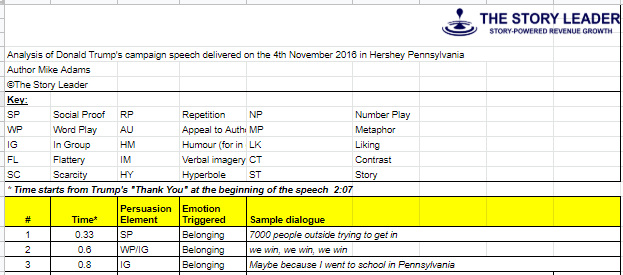Testimonials lead to Referrals and MORE business!

Your customers like and appreciate your services more than you think!
How do we know? Because we routinely talk with our client's customers in 'testimonial calls' and the results are usually gratifying and surprising.
However, most of the business and sales people we work with really do not appreciate the true value of the products and services their company provides.
If you think about it, it makes sense. When your customers contact you its usually because something isn't working as promised or they need something. In each case they are thinking about themselves, not you and your business.
We all know that the single best way to win a new customer is to be referred or recommended by an existing customer but what is the best way to get referrals?
There are three broad approaches:
Wait for your customer to refer you
Ask directly for a referral
Use a testimonial gathering process and be offered referrals
The first approach, known as the HOPE strategy, looks problematic for most businesses. Even if your best customers would happily refer you, they probably won't think to do so and if they do, they probably do not appreciate what a good referral would be for your business.
In the second approach (the ASK strategy) most people will either wait until the customer has expressed satisfaction or they assume benefits have been received and ask directly
"it looks like this is working well for you, do you know anyone else that would appreciate our services?".
The persuasive principles in play are LIKING (Customer thinks, 'I like you so I'll give you what you ask for') and/or RECIPROCITY - 'You've given me something(good service, for example) and I should give you something in return'. This approach certainly works but most people are not comfortable asking.
The third approach is more subtle, much more effective and is the main focus of this article. This technique uses priming or 'presuasion'** to invoke the more powerful persuasive principle of CONSISTENCY so that a customer will become, as a matter of identity, someone who routinely gives you things including referrals.
It starts with testimonial gathering. Rather than fish for complements yourself, it works better if you use a third party (like us) to ask on your behalf. You introduce us to your best customers, we call them and gently guide them to say nice things about your service. The recorded phone calls are typically 10-15 minutes in duration and we average one testimonial per minute of call.
So, if we call five of your best customers, you will likely receive about fifty testimonials you can use for your website and marketing materials
But it gets better.
Towards the end of the call we ask two questions:
"Have you ever referred <my client> to others in your network?"
and
"Would you be willing to refer them?".
Your customer is now thinking about the best referral possibilities just after they have praised your service - this is ideal.
There are several other advantages to this type of testimonial gathering;
Your sales people get to hear the recording of your customers describing the true value of your services. Sales people often have a mistaken opinion about the true value of their market offering and consequently use the wrong language and voice tone in their sales conversations.
Your operations and customer service staff also hear the true value of your services - a motivating and pleasant change from being routinely beaten up!
Your best customers are primed to be even stronger supporters of your business.
Mystery buyers browsing your website will be powerfully persuaded by reference examples in their own language - the language of the buyer.
Does it sound too good too be true? Ask us about this service and we'll refund our fee if you are not delighted with the results.
______________
*In this article we use the word 'customer' to denote either 'customer' or 'client'
**Presuasion - a term coined by the psychologist Robert Cialdini and the title of his
Photo credit: http://therealestatetrainer.com












